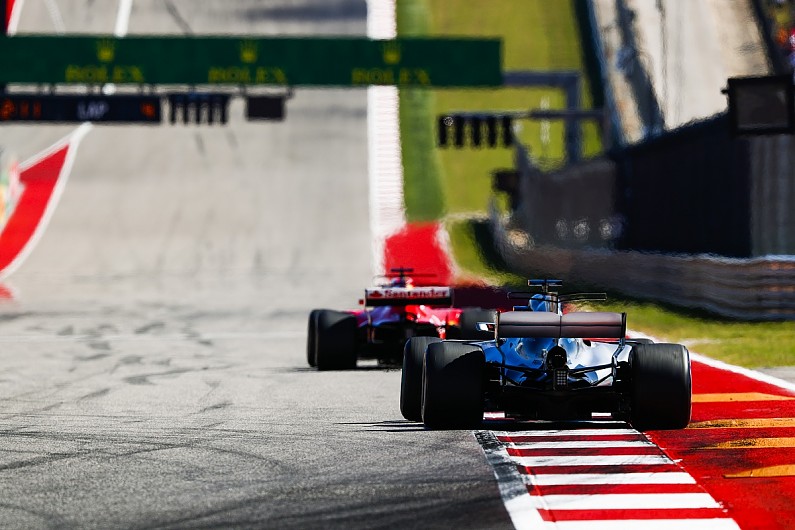Upgrade for free today
You have only 5 articles remaining to view this month.
Last year’s intense Formula 1 title fight between Ferrari and Mercedes meant boundaries were being pushed and rules clarifications called on – and there are more in store for 2018.
Oil burn was the main regulatory controversy of the 2017 F1 season.
A spate of clarifications on this matter coincided with an ebb and flow of Mercedes and Ferrari’s performance – even though there was never a suggestion either of them had outright broken rules.
One consequences of the oil burn controversy was a push by teams and the FIA to impose new rules for 2018 to stop any grey areas of the regulations being exploited.
Those clarifications go beyond oil burn, suggesting other engine tricks were being used:
Oil burn limits
The FIA began last year a process of limiting the amount of oil that could be burned during the course of a grand prix.
From September’s Italian Grand Prix, teams could only burn 0.9 litres of oil per 100km. For the 2018 season, this limit has been reduced to just 0.6 litres of oil per 100km.
Now new regulations have been introduced to help the FIA keep a closer eye on what teams are doing.
* Teams must supply the measurement of the oil level of the main tank to the FIA at all times of the event. The mass of oil contained in each oil tank, with the exception of the main oil tank, must also now be declared to the FIA one hour before the start of the race.
* Active control valves between any part of the power unit and the engine intake air will be banned.
With sump breather pipes now feeding excess oil back into the engine through the intake – rather than out of the back of the car as happened decades ago – this will prevent clever systems diverting this oil into the engine for a power boost.
* Teams will be limited to a single oil specification per engine at a given grand prix – which must be declared before the event gets under way.
This will prevent teams using a qualifying oil specification for extra power, and switching to a different type for the race.
There are also much stricter definitions of what oil should be – with set characteristics to ensure that it is being used purely for lubrication, cleaning and cooling and not for any power boost.
Article 20.1.2 of F1’s technical regulations states: “The presence of any component that cannot be rationally associated with the defined functions of the engine oil will be deemed unacceptable.”
Recycling fluids
There is a further clampdown on alternative uses of other fluids as well as oil.
A new article 5.1.12 of the technical regulations makes it clear that any breather fluids must exit the car at the rear, and cannot be recycled for use in the engine.
It states: “All power unit breather fluids may only vent to atmosphere and must pass through an orifice which is positioned rearward of the rear axle centre line and less than 400mm above the reference plane and less than 100mm from the car centre plane. No breather fluids may re-enter the power unit.”
That suggests teams had been finding scope to use power-boosting additives in breather fluids, that could then get put back in the system to be burned by the engine as they came back through.
Article 5.14.2 adds: “The addition of any substance other than fuel into the air destined for combustion is forbidden. Exhaust gas recirculation is forbidden.”
Engine temperatures
One particularly intriguing rulebook addition relates to engine temperatures, raisising some eyebrows about what prompted such a change.
A new article 5.6.8 of the technical regulations makes it clear that in the engine plenum air (defined officially as from plenum entry to cylinder head), temperatures must now hit a minimum target.
The rule states: “Engine plenum…air temperature must be more than 10 degrees centigrade above ambient temperature. When assessing compliance, the temperature of the air will be the lap average recorded, by an FIA approved and sealed sensor located in an FIA approved location situated in the engine plenum, during every lap of the race.”
While some laps will not count for this average (the first lap of the race, laps carried out behind the safety car and laps with a pitstop), it is clear that the FIA wants an overall picture of what teams are doing with the air going into engines.
The requirement for teams to keep above a minimum temperature suggests that there was scope for the air to be cooled – which would help the performance of F1’s turbo hybrid engines.
Hotter air holds less oxygen than cooler air, meaning that the turbo will have to work harder, spin faster and compress more air to produce the same amount of boost than it would get if things were cooler.
If the turbo is already at its maximum potential, then it will mean that engine performance gets reduced as the air temperature increases.
There can be other knock-on effects of warmer air too – it can increase the temperature inside the turbo, which causes a further loss of power, with the intercooler becoming less efficient too.
It is hard to predict right now what impact – if any – the new FIA regulations on engines will have in 2018.
Opinions were, after all, divided last year about how much the performance gap between Mercedes and Ferrari closed up and spread out as the various oil burn clarifications came out.
But the tighter scrutiny on what teams are doing with engines should at least bring an end to a lot of suspicions and finger-pointing – until, of course, teams find another grey area to go away and chase.
